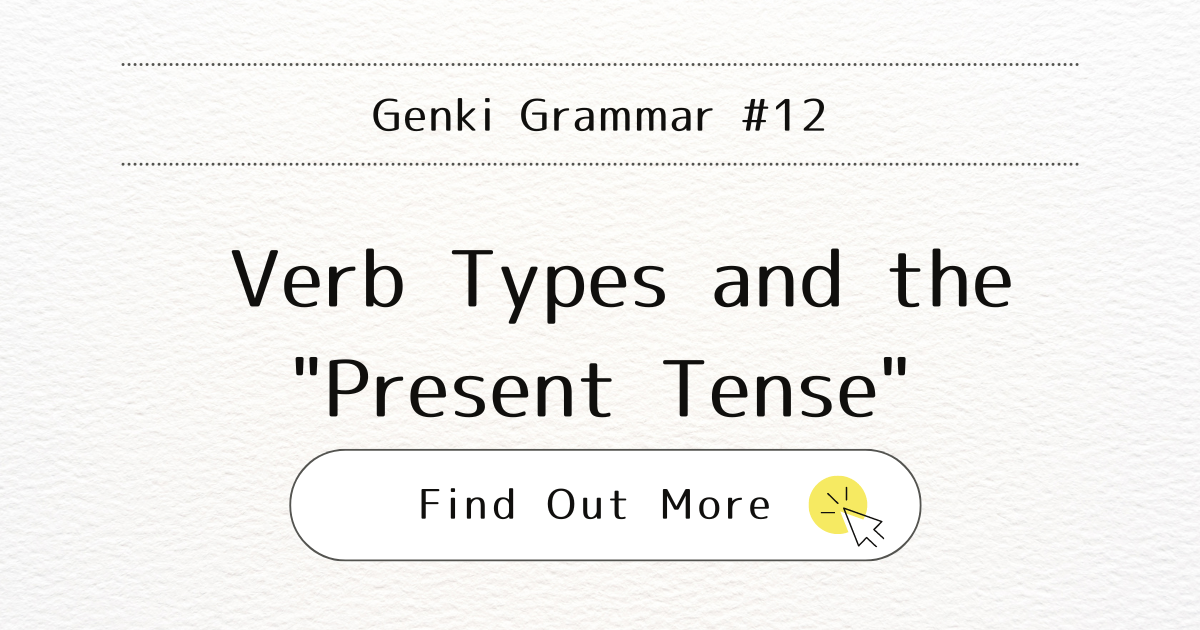
Introduction
In this blog post, we’ll learn about different types of Japanese verbs and their “present tense” forms. These verbs describe basic human actions and are often called “action verbs.” The present tense of these verbs can indicate either habitual actions or future actions. Let’s dive into what these mean and how to use them.
What It Means
The “present tense” of Japanese verbs can mean two things:
- Habitual Actions: Activities that a person regularly or often does.
- Future Actions: Activities that a person will do or plans to do in the future.
When You Use It
Use the present tense form of verbs when talking about things you do regularly or things you will do in the future.
Examples
Habitual Actions:
- 私はよくテレビを見ます。
(Watashi wa yoku terebi o mimasu.)
I often watch TV. - マリアさんはときどき朝ご飯を食べません。
(Maria-san wa tokidoki asagohan o tabemasen.)
Maria sometimes doesn’t eat breakfast.
Future Actions:
- 私はあした東京に行きます。
(Watashi wa ashita Tokyo ni ikimasu.)
I will go to Tokyo tomorrow. - マイケルさんは今日はうちに帰りません。
(Michael-san wa kyou wa uchi ni kaerimasen.)
Michael will not return home today.
Note
Remember that the present tense in Japanese can be used to talk about both regular activities and future plans. It’s context that helps determine which meaning is intended. Also, keep in mind that ongoing actions use a different form, which we will learn later (-ている form).
Conclusion
Understanding how to use the present tense of verbs in Japanese will help you talk about both your daily routines and your future plans.



